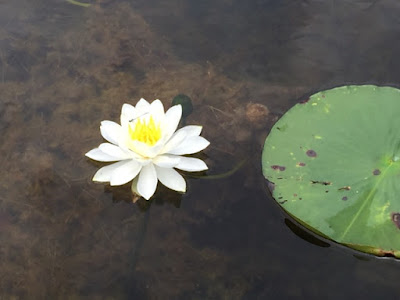White water-lily (with bonus damselfly!). Really a lovely pond flower that blooms for a very long time. These are perfectly adapted to their aquatic habitat. Leaves have a very large surface area, allowing them to float on the water, thus maximizing their sun exposure. (Look at that surface tension!) The stoma (for air exchange) are on the top of the leaves, rather than the underside, which is much more typical. And, the leaf tops are waxy to repel water. Under water, the stem is long and flexible, allowing the plant to float despite changing water levels. The flowers also float, and are very fragrant if you manage to get your face close to one. When the seeds form they go underwater and sink, increasing their chances of growing... though they also reproduce by rhizomes. Though I've never seen the stereotypical frog hanging out on a lilypad, under the water these plants, which ususally grown in colonies, provide shelter for all manner of macroinvertebrates. (Which makes them a great place to use pond nets with kids! And also attracts frogs and other larger species that eat the small critters.)
To keep up with my recent trend of scientific nomenclature, these are Nymphaea odorata; nymphaea are grottoes or shrines dedicated to nymphs! (Odorata presumably refers to the strong fragrance, but that's not as interesting!)

No comments:
Post a Comment